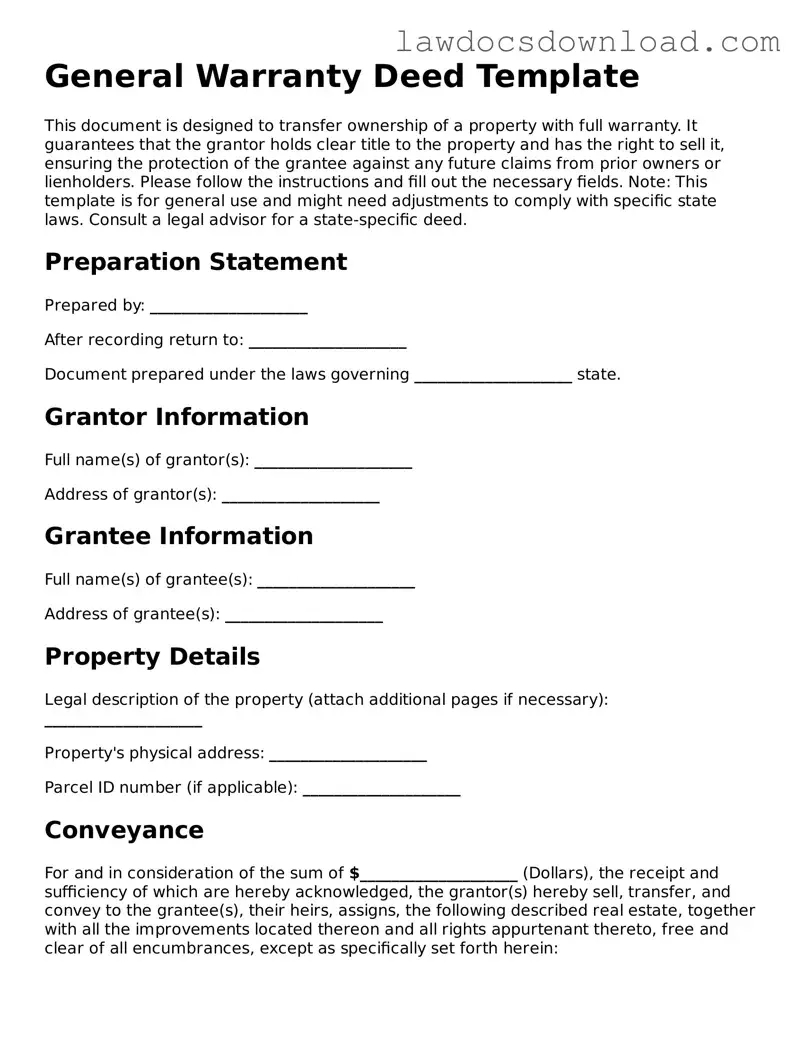General Warranty Deed Template
This document is designed to transfer ownership of a property with full warranty. It guarantees that the grantor holds clear title to the property and has the right to sell it, ensuring the protection of the grantee against any future claims from prior owners or lienholders. Please follow the instructions and fill out the necessary fields. Note: This template is for general use and might need adjustments to comply with specific state laws. Consult a legal advisor for a state-specific deed.
Preparation Statement
Prepared by: ____________________
After recording return to: ____________________
Document prepared under the laws governing ____________________ state.
Grantor Information
Full name(s) of grantor(s): ____________________
Address of grantor(s): ____________________
Grantee Information
Full name(s) of grantee(s): ____________________
Address of grantee(s): ____________________
Property Details
Legal description of the property (attach additional pages if necessary): ____________________
Property's physical address: ____________________
Parcel ID number (if applicable): ____________________
Conveyance
For and in consideration of the sum of $____________________ (Dollars), the receipt and sufficiency of which are hereby acknowledged, the grantor(s) hereby sell, transfer, and convey to the grantee(s), their heirs, assigns, the following described real estate, together with all the improvements located thereon and all rights appurtenant thereto, free and clear of all encumbrances, except as specifically set forth herein:
Exceptions or Reservations
Specify any exceptions or reservations (if any): ____________________
Signatures
The parties have executed this deed on this ____ day of ____________________, 20____.
Grantor Signature(s): ______________________________________________________
Grantee Signature(s): ______________________________________________________
Acknowledgment
State of ____________________
County of ____________________
On this ____ day of ____________________, before me, a notary public, personally appeared the above-named grantor(s) and grantee(s), known or identified to me to be the person(s) whose name(s) is/are subscribed to the within instrument, and acknowledged that they executed the same for the purposes therein contained.
In witness whereof, I have hereunto set my hand and official seal on the date above written.
Notary Public Signature: ______________________________________________________
My commission expires on: ____________________
